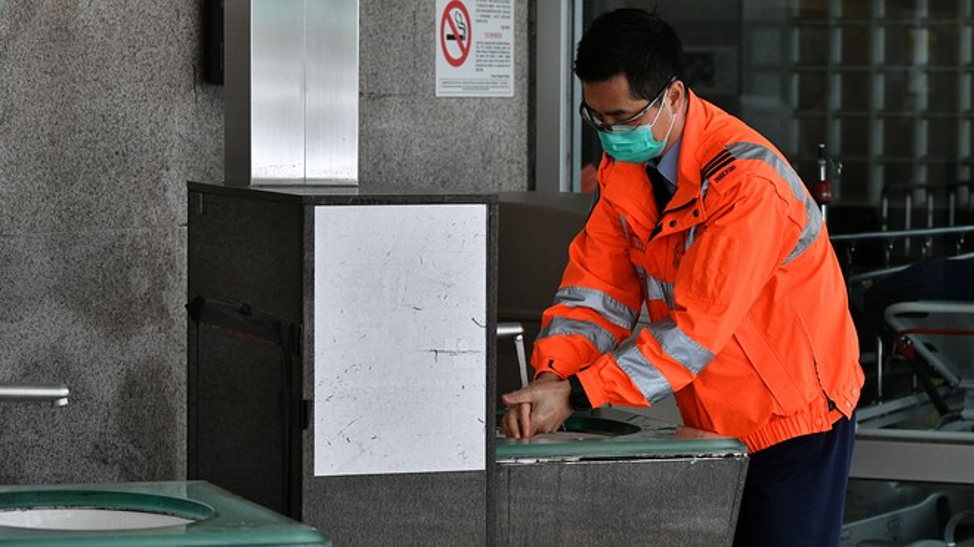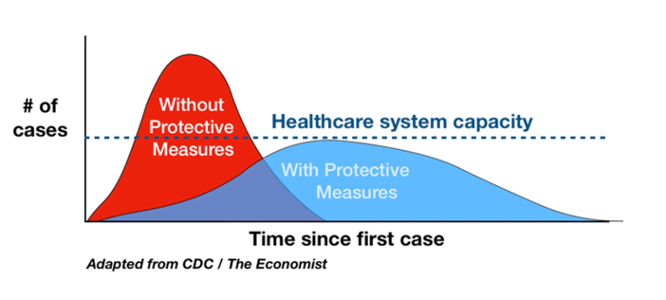
Coronavirus and Behavior Change: 3 Lessons for Your Next Campaign
While there will be many lessons to learn from the Coronavirus pandemic for years to come, anyone interested in behavior changes can now see the fundamentals on display every day. For context, here are three best practices for changing individual behaviors:
- Build Knowledge: Educate people about what behavior is important and why.
- Increase Self-Efficacy: Develop skills and confidence among the target audience to succeed with the new behavior.
- Change Social Norms: Shift public perceptions of a “new normal” in thinking and behavior.
Let’s take a look at how those techniques are being used effectively—or not—in the response to Coronavirus.
Building Knowledge, with Help from a Curve
The CDC’s guidelines on “How to Protect Yourself” start with education by encouraging people to “Know How it Spreads.” By stating that, “The best way to prevent illness is to avoid being exposed to this virus,” they set up the rationale for why “social distancing” is so important. Lots of other information is building our knowledge of important behaviors, like washing your hands frequently, not touching your face, and practicing “self-quarantine” if you’re sick.
Perhaps the best example of knowledge building on display is what most of us (hopefully!) now know about the importance of “flattening the curve.” This message seems to have cut through the noise thanks in part to a simple visual, like this one featured in a recent New York Times article.

“One chart explains why slowing the spread of the infection is nearly as important as stopping it,” says the article. With one straightforward graphic and few words, people can quickly see the cost of inaction compared to the benefits of action.
Lesson 1: Build knowledge using simple, powerful images
Next time you want to build behavior change knowledge among your audience, give them an image that’s simple yet packed with meaning.
Increase Self-Efficacy—Stay 6 Feet Away and Wash 20 Seconds at a Time
Two of the most consistent messages coming across in Coronavirus campaigns these days are about social distancing and hand washing—and how to do both right. Beyond just building knowledge about why the change in conduct matters, the important part here is showing people how to do it so they feel confident and think “I can do that.”
We now know that “social distancing” means 6 feet apart, a concept that’s easy to understand and apply. And until now, we all thought we knew how to wash our hands, but some simple instructions have reminded us to use warm water and keep at it for 20 seconds. Again, this basic guideline is one we can easily practice.
Lesson 2: Increase self-efficacy with simple instructions anyone can use
If you want to convince people that they can follow a new way to behave, keep it simple and include an objective reference point—like 20 seconds—that anyone can apply.
Change Social Norms, Consistently Please
The “new normal” is a phrase that’s being used a lot these days—but how did this reality get to be normal so fast? One way to quickly create a new norm is by changing laws and practices that make the given behavior commonplace. Closing restaurants and bars, keeping students off-campus, and requiring non-essential employees to stay home are all examples of what’s known as policy, systems, and environment (PSE) changes. While cities and entire states are now implementing these kind of social distancing and “shelter in place” orders, there’s still a lack of consistency across the country, as this map of Coronavirus policies by state shows (click on your state to see what your curve looks like with or without action). Unfortunately, some authorities have been slow to acknowledge what experts know: we need a consistent national approach that swiftly changes the norm and behaviors with it. Another way to change norms is promoting the new behavior so it’s seen as desirable and the audience concludes “that’s what people like me and those I admire are doing, so I should too.”
Lesson 3: Change social norms with both PSE change and promotional strategies
Changing social norms takes time, but you can accelerate it through PSE change and the kind of promotion that makes the new behavior popular.
Let’s Control the Contagion
A great example of a Coronavirus campaign designed around these three best practices—build knowledge, increase self-efficacy, and change social norms—is Control the Contagion. Matt Damon, Kate Winslet, and other stars of the movie Contagion created PSA’s like this from their home that cover all the basics (Winslet even demonstrates proper hand washing). And perhaps most important, they use information from the same health experts that worked on the movie, all in an effort to fight “misleading, inaccurate messages” about Coronavirus circulating on traditional and social media.
We still have a long road ahead to flatten the curve and get over it, but we need to do more than practice good hygiene to make it happen—we also need to educate, increase competency and work together to create the kind of lasting change that will ensure success.